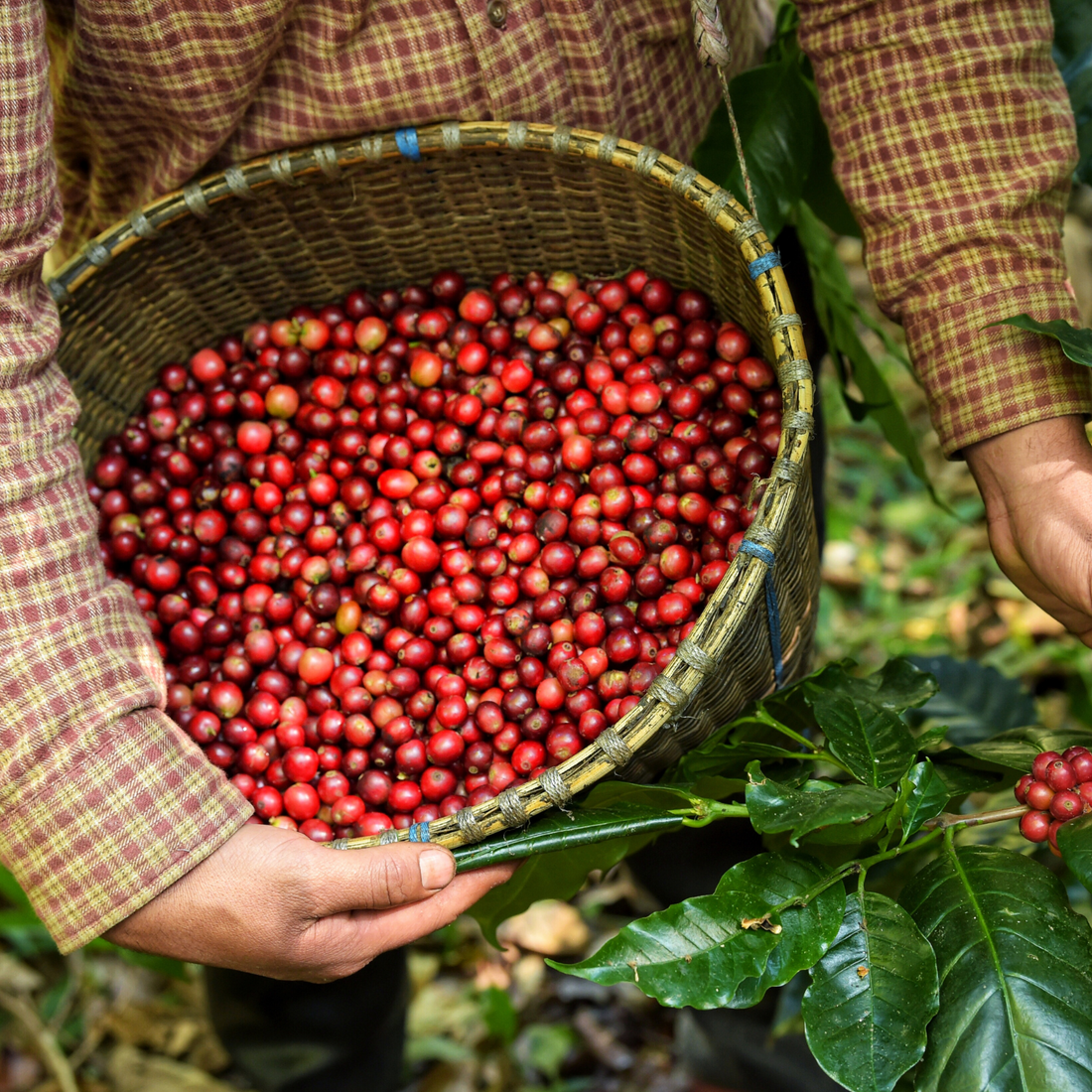
From Seed to Sip: The Journey of Coffee Beans
Share
Coffee represents a worldwide adventure involving meticulous attention and skilled work by many people who remain unseen. Each coffee bean moves from small tropical farms, to becoming the brewed cup you enjoy at home through an amazing transformation process. By learning about this journey you will appreciate every sip more.
Let's examine the journey coffee takes from farm to cup by discussing every step along the way.
1. Cultivation: Planting the Seeds
Shaded nurseries serve as the starting point of the coffee journey, where coffee seeds, often referred to as coffee beans, find their first home in nutrient dense soil that receives ample water. The planting of these seeds takes place during the rainy season, which provides the necessary conditions for proper germination and healthy root growth.
The seedlings develop under close supervision for several months before farmers transplant them into open fields. The best growing conditions for coffee exist within the "Coffee Belt", which stretches between the Tropics of Cancer and Capricorn and provides optimal altitude, rainfall and temperature. Coffee plants start producing fruit called coffee cherries after 3–4 years of growth.
2. Harvesting: Picking the Cherries
The coffee cherries transform from green to bright red when they reach maturity. There are two primary methods to harvest coffee cherries.
Selective picking – Hand-picking only the ripe cherries. It’s time-consuming but ensures top-quality beans.
Strip picking - Involves removing every coffee cherry from the branch simultaneously without considering their ripeness levels. Faster, but quality control is lower.
Specialty coffee producers usually choose selective picking to maintain consistency and high quality of their end product.
3. Processing: Extracting the Beans
Beans must be extracted from the cherry once harvesting has finished. The extraction process of the coffee beans from cherries offers two distinct approaches.
Natural processing - Cherries are placed out to dry under sunlight. After drying the cherries their outer layer gets removed by mechanical means.
Wet processing - Coffee cherries undergo pulping to remove their skins followed by fermentation to break down mucilage and finally they are washed and dried.
The method used affects the flavour: Coffee processed through the dry method develops fruity characteristics and full body while wet processing produces cleaner tastes and higher acidity.
4. Milling: Preparing for Export
The dried beans enter a milling procedure that consists of several steps.
- The hulling step involves taking off the dried outer husk and parchment layer from the beans.
- The polishing phase serves as an elective measure to eliminate any skin remnants.
- Beans undergo sorting based on their size and weight as well as their colour. Coffee processing separates defective beans through mechanical or manual methods.
The process guarantees that only superior beans advance to the roasting stage and international distribution.
5. Exporting: Global Distribution
Packed into jute or sisal sacks, the sorted green beans are distributed to markets around the world. Green coffee remains stable and long lasting which makes it perfect for transporting globally. The beans proceed to roasters who ready them for retail sale once they reach their endpoint.
6. Roasting: Developing Flavour
Roasting transforms green beans into flavourful aromatic beans that we all know. Roasting coffee beans demands both artistic skills and scientific knowledge.
Drying phase – Removes remaining moisture.
The browning phase - Produces the first flavour notes through Maillard chemical reactions.
The development stage - Achieves the preferred roast level for the coffee beans ranging from light to dark.
Roasters create personalised profiles to emphasise the distinctive features of coffee's origin along with its processing techniques and bean variety.
7. Quality Control and Cupping
Roasted beans undergo quality control before they reach consumers to ensure both flavour and consistency are maintained.
Cupping represents the official method professionals use for coffee tasting in the industry. Experts examine the aroma, acidity levels and body along with the overall profile of coffee samples to make sure they reach expected standards. Flavour defects and balance problems in coffee stem from harvesting mistakes or problems in processing and roasting.
Expert roasters at Cotswold Coffee work meticulously to guarantee your cup contains only premium beans.
8. Grinding: Preparing for Brewing
It is essential to grind coffee beans properly before brewing to match the specific brewing method you use.
Coarse – Best for French press
Medium – Ideal for pour-over or drip machines
Fine – Perfect for espresso
The grind size impacts extraction. If your coffee powder is ground too fine it will result in an overly bitter flavour. If the grind size is too coarse your coffee will have a weak or sour taste. Freshly ground beans specifically chosen for your brewing method create substantial improvements in your coffee experience.
9. Brewing: Crafting the Cup
This is the final, and arguably most personal step. The coffee brewing method you select determines the taste outcome of your beverage, whether you choose espresso, pour-over, or French press.
Key factors in brewing include:
- Water temperature (ideally between 90–96°C)
- Brewing time
- Water quality
- Coffee-to-water ratio
By mastering these brewing components you achieve the intended flavour profile designed by the roaster.
10. Packaging: Keeping Coffee Fresh
The sensitivity of roasted coffee to light, air, and moisture makes proper packaging essential. Roasters frequently employ resealable bags with one way valves to allow gases to escape while blocking oxygen entry. This preserves flavour and extends shelf life.
Cotswold Coffee ensures our beans reach you freshly roasted and carefully packaged to deliver peak flavour, whether your purchase is for a single bag or a subscription service.
Final Thoughts
The extraordinary coffee journey from seed to sip involves farmers, processors, exporters, roasters, and baristas, who work together to produce something remarkable.
We pay tribute to the coffee journey through precise bean sourcing, roasting methods and direct delivery of superior products to your doorstep at Cotswold Coffee. The next time you sip your morning coffee take a moment to reflect on its journey since every exceptional cup starts its story well before it reaches your mug.
Discover our complete selection of freshly roasted coffee at Cotswold Coffee to experience the journey personally.
